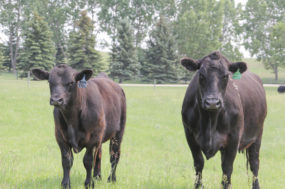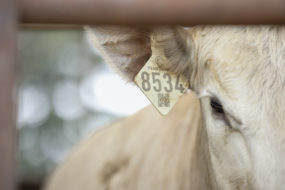While commercial producers can often get by with a basic set of records for on-farm herd management, registered producers will find their record-keeping needs to be significantly more in-depth. In addition to on-farm herd management use, registered producers will also need to keep records for making individual cow breeding decisions, marketing to their customers and registering their cattle with a breed association.
With these significant record-keeping requirements of registered producers, it becomes even more critical to have a record-keeping strategy to ensure you are collecting relevant information while not spending time collecting unnecessary information.
Recordkeeping for your customers
Whether your customer is a commercial ranch or registered ranch, records are a critical component of the buying process. While phenotypical characteristics from a visual inspection are still crucial to buyers, the performance and genetic data can ultimately close the deal at the best price for the seller. When a buyer has supporting data that removes the unknowns of the animal, they are often willing to pay a higher price.
Commercial producers buying herd sire prospects will want records that can demonstrate calving ease with strong growth potential. Cattle producers selling at weaning will primarily be focused on growth information such as adjusted 205-day weaning weight and weaning weight ratio. On the other hand, those retaining ownership are more interested in yearling data, carcass data and feed efficiency. For calving ease, udder and teat score and hip height can influence decisions for purchasing replacement heifers.
Branded beef programs and retained ownership buyers may need birth dates for age and source verification needs. Also, many of these types of programs will either offer a premium for animals or have a requirement for health records following a defined protocol.
Registered breeders buying herd sire prospects and replacement heifers will want the most substantial amount of data, including expected progeny differences (EPDs), weights, carcass data, pedigrees and more. Often, they will also want to know more about a dam’s production history, including the performance and selling prices of her offspring.
Recordkeeping for your breed association
Breed associations encourage, and often require, a wide range of data when registering cattle. This information includes sire and dam registration numbers, calving details, weaning data, yearling data and various visual appraisals and management codes. Also, as new technologies such as genetic testing become available, breed associations continue to evolve and incorporate these new values into their analyses.
All of this data you provide on your animals, plus this type of data the association already has on relatives of your animals, is used to calculate EPDs. EPDs can then be used in breeding decisions by you and your cattle buyers.
Since record-keeping requirements vary by association, it’s worth checking with your breed association to understand the specific data they require, as well as the data that, when optionally provided, is also used.
Recordkeeping for on-farm usage
The goal of a registered operation is to sell cattle by the head rather than by the pound. Raising quality cattle starts with making good breeding decisions, whether pasture exposure, artificial insemination or embryo transfer. Records used in breeding selection include pedigrees, EPDs, performance data of related progeny and, of course, past sales history of similar cattle. Having all of this information in front of you for breeding decisions helps determine the ideal breeding combination.
Marketing cattle to potential buyers requires having thorough records at your fingertips. Something as simple as a printed price list that includes animal tag, sire and dam, birth date and a few details can go a long way in helping establish confidence as you take a buyer through your herd. Other times, a potential buyer may want to review pedigrees, offspring and performance data. Having all of this information electronically on a tablet or phone helps ensure you can answer your potential buyer’s question as soon as he or she asks.
Maintaining customer history records can go a long way in helping you help your customers. Purchase history can show you what type of bloodlines they buy, when they tend to purchase and the price range they’ve purchased at previously. Customer records, combined with reminders, can also help you follow up with your customers at the beginning of their typical purchasing window.
In addition to keeping the records for yourself, it’s equally important that others on the ranch can access this information. By providing others with access from their laptop, tablet or smartphone, you are helping ensure everyone keeps on the same page and maybe can even pitch in with some of the record-keeping duties. It’s also a great way to manage a ranch “to do” list so that everyone can ensure tasks get done.
Conclusion
Some level of recordkeeping is essential to every cattle operation. Choosing to be a registered breeder who sells cattle by the head involves a significantly higher level of record-keeping than commercial operations selling by the pound. Once you have an established record-keeping system in place, you can maintain records needed for on-farm use, by your breed association and by your customers. ![]()
Getty Images.

-
Terrell Miller
- Owner
- Cattlesoft Inc.
- Email Terrell Miller









